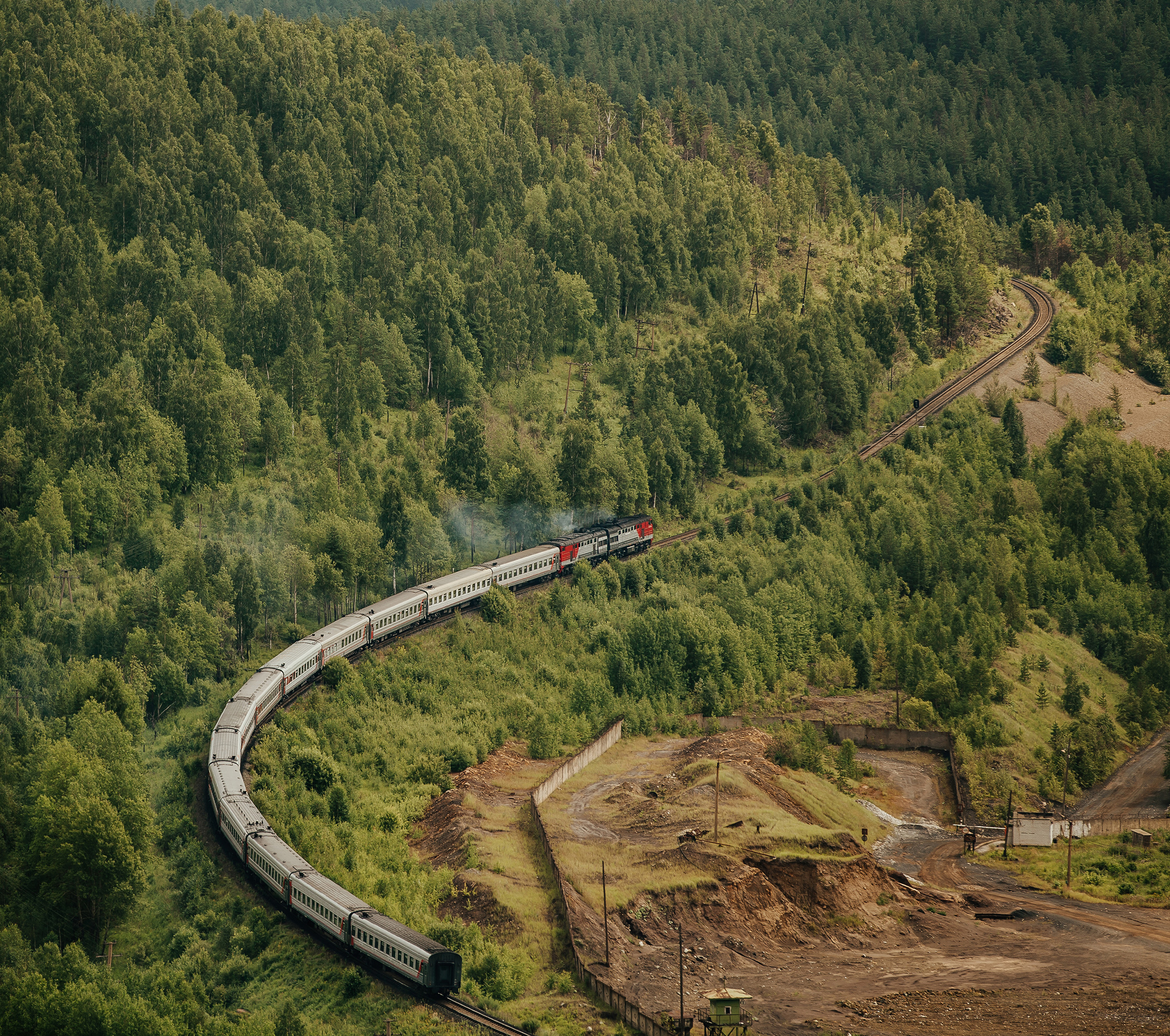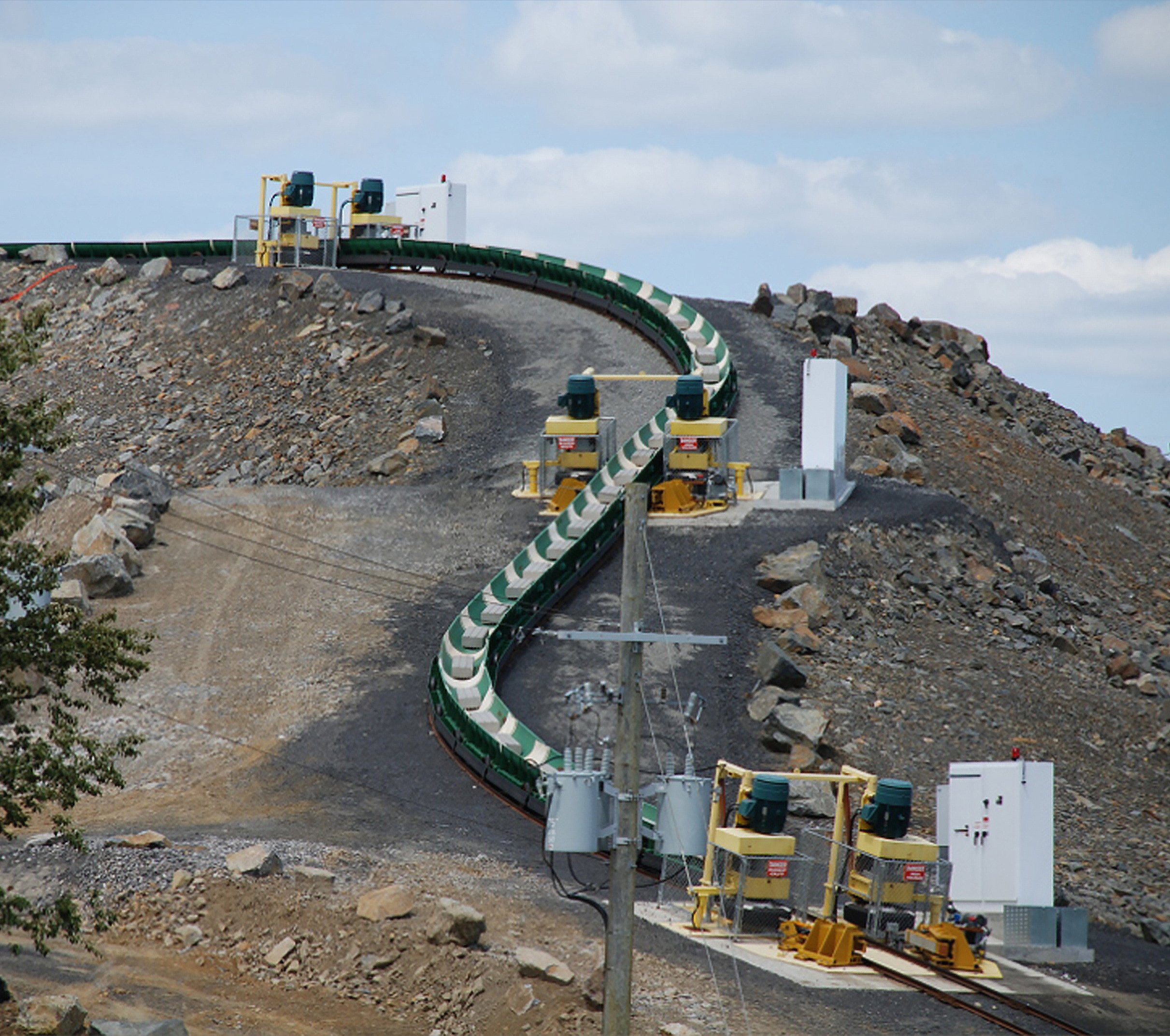Why Rail?
The need for a rail link to move the material from the Ring of Fire to a location where it can be processed is critical for all mining companies in the Ring of Fire. The Ring of Fire wetlands requires commitment to a very small footprint, where operations are mostly performed underground. The crushed, un-processed, run-of-mine chromite, taken from underground to the surface results in very little disturbance above ground. A small mine footprint would not be possible without the economies of scale that come with rail transportation, enabling economic movement of large volumes of un-processed chromite. Even chromite concentrate requires rail transport due to the nature of this heavy bulk commodity. Ring Of Fire Transportation And Utilitiesoration is exploring two options for the rail transport of the chromite, a traditional heavy haul railroad or utilizing the technology of Rail-Veyor, a Sudbury-based company that specializes in shuttle systems to move product.
TRADITIONAL FREIGHT RAILROAD
The main reason to utilize a heavy-haul freight railroad is environmental, namely that of CO2 emissions – on comparison, our research shows that trains produce 75% less greenhouse gas than trucks. The environmental factor is core to the decision that trucks are not an acceptable mode of transportation to support mining in the Ring of Fire. Dust particles raised by trucks simply add to the environmental concerns relating to greenhouse gases. Another reason is safety – rail is exponentially safer than trucking. In our view, it is unfathomable to think that hundreds of trucks driving daily on a gravel road is a safe way to transport the materials from the Ring of Fire and adding passenger transportation to the traffic on the same road compounds those safety concerns. Another factor is economics – economically, the costs clearly dictate that rail is the preferable choice for transporting large volumes of materials. The gravel road will not endure the effects of the trucks travelling up and down the road daily – the maintenance and upkeep would be extreme, and it would be irresponsible to expect that taxpayers’ money should pay for the costs of maintaining the road damages caused by those commercial trucks. Therefore, from the economic point of view, for this application rail is much less expensive than trucking. Reliability – rail is much more reliable than trucking simply due to the fact the trains travel on their own right of way and can operate 24 hours per day through all kinds of weather. As well, as output increases at the Ring of Fire, rail is scalable – adding another train or adding a bunch of additional railcars is easily accomplished, which is why rail is such a great option, whereas adding any significant number of additional trucks to one gravel road simply militate against trucking as a transportation alternative and should make it a non-starter for all of the reasons stated above.


RAIL-VEYOR
Rail-Veyor provides an all-electric fully autonomous shuttle system with multiple trains and software management system, resulting in the lowest OPEX haulage solution with the shortest timeline to implementation. In preliminary discussions with Rail-Veyor, they claim that their CAPEX costs are significantly lower than other modes of transportation. Rail-Veyor operates on electricity which makes it environmentally friendly. Rail-Veyor’s capex and opex costs are significantly lower than other modes of transportation.
